The original article “Two Ukraines” appeared as blog by colonelcassad in Decmber 2013 in Russian.
I present here a translation of the article into English, with the infographics legend explained whenever feasible; but first I want to give some historical backdrop to where Novorossia comes from.
In his article Cold War Renewed With A Vengeance While Washington Again Lies Paul Craig Roberts very astutely writes:
The EU, ordered by Washington, told Russia to suppress the opposition in southern and eastern Ukraine to Washington’s stooge government in Kiev. But, as every educated person knows, including the White House, 10 Downing Street, Merkel, and Holland, Russia is not responsible for the separatist unrest in eastern and southern Ukraine. These territories are former constituent parts of Russia that were added to the Ukrainian Soviet Republic by Soviet Communist Party leaders when Ukraine and Russia were two parts of the same country.
The county of Novorossia was established by the Highest Decree of the Russian Empress Ekaterina II in 1764 and existed until 1802, when it was divided into three smaller counties: Nikolaevskaja, Ekaretinoslavskaja and Tavricheskaja counties. The reason for creation of Novorossia countie on the former territories of Slavjano-Serbia was to create a buffer zone against Osmano-Tatar aggression
Below is the maps of the Novorossia:

And here is the Ekaterinoslavskaja county shown against the borders of Ukraine:

Here is what Ukraine consited of until February (Crimea made a lucky escape and re-joined Russia):

Legend:
Light yellow – Zaprozhje – Ukraine before 1654
Orange – Presents of Russian monarchs between 1654 and 1917
Light-green – Novorossia – Lenin’s present in 1922
Medium-green (5+6) – Eastern Galicia – Stalin’s present of 1939-1940 (given to USSR according to Molotov-Ribbentrop agreement)
Dark-green – Crimea – Khrushjov’s present in 1954
Transcarpathia (9) – taken from Czechoslovakia in 1945
Northern Bukovina and Southern Southern (7+8) – captured by USSR in 1940
So bearing in mind that Ukraine is a collection of disparate lands, and remembering the Russian roots of the Cossacks living on the lands of Novorossia, the move performed by Lenin after the coup d’etat of 1917, in creating Ukraine and assigning to it the territories of Novorossia was a direct recipe for creating a problem for future generations.
The people of the East differ to much from their Polish-rooted Western cousins.
And now it’s time to introduce the translation of the blog post Two Ukraines.
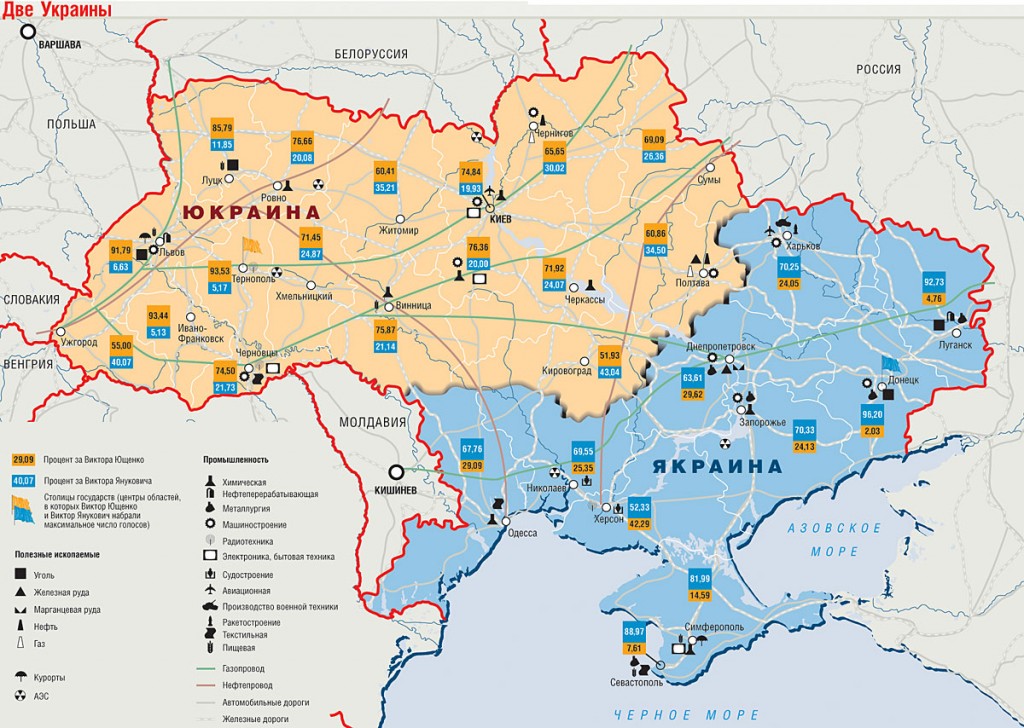
(Legend: “Yukraina” to the left; “Yakraina” to the right, with percentage of people who voted for Yushenko or Yanukovich during the last legitimate presidential elections)
People asked here about the possible lines of division of Ukraine. In fact, there is nothing new since 2004. Political, economic, cultural and linguistic split historically goes along the Dnieper and it’s not for nothing that from the olden times Ukraine into the Right-bank and Left-bank Ukraines. It’s been written a lot on this topic both in the context of elections, and in the context of the policy of Ukrainianization, in the context of confrontation of the “orange” and “blue” – those who are interested in the question, can trace the genesis of this split in the days Hetmanate and Pereyaslavska Rada (1654).
So just for the information some infographics of recent years on the topic, as some friends in Russia are fed the official idea of Ukraine as a certain monolithic state.

(Ethno-linguistic map. Legend:
Red – speaking Ukrainian
Light-read – mainly speaking Ukrainian
Yellow – speaking Russian
Light-yellow – mainly speaking Russian
Brown – ethnic Russians)

(The percentage of people stating Russian as their mother tongue as per 2001 [Kiev: 30%, Sevastopol: 90%])

(Language used. The numbers are for Russian, Surzhik [and mix of Russian and Ukrainian] and Ukrainian. Legend:
Dark-green – absolute domination of Russian
Light-green – mainly Russian
Orange – Ukrainian)

(Support for Russian as an official state language)
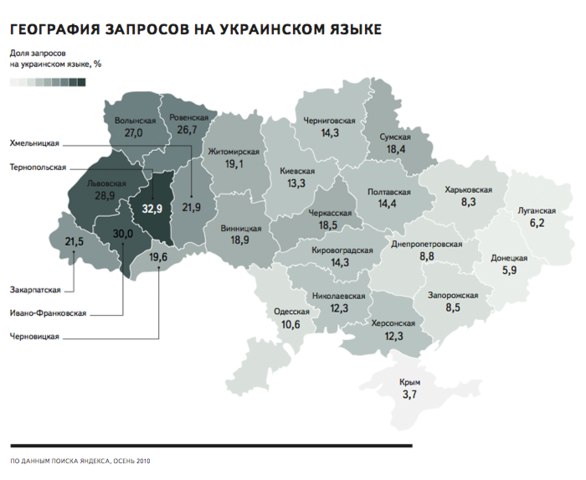
(Geography of requests done in Ukrainian language)

(Regions that have local officially state status of Russian language. Can you see why Crimea sailed away, correlating this map with the previous ones?)
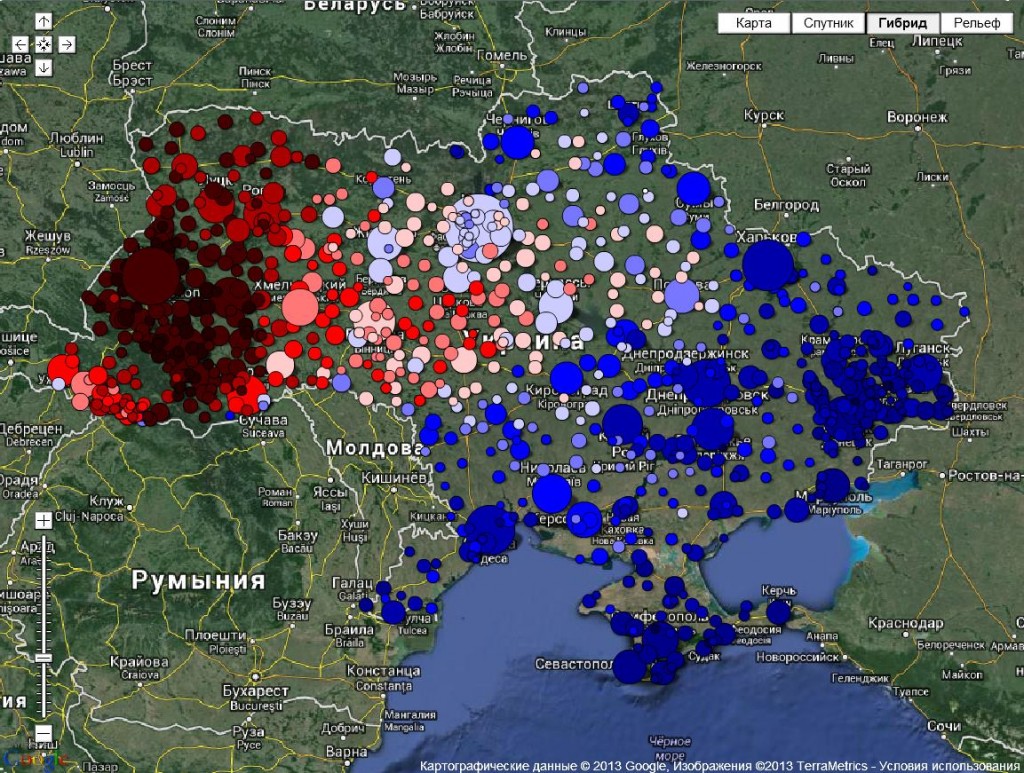
The proportion of users, who stated their mother tongue as Russian (blue) or as Ukrainian (red) in the popular social media VKontakte [“Russian Facebook”].
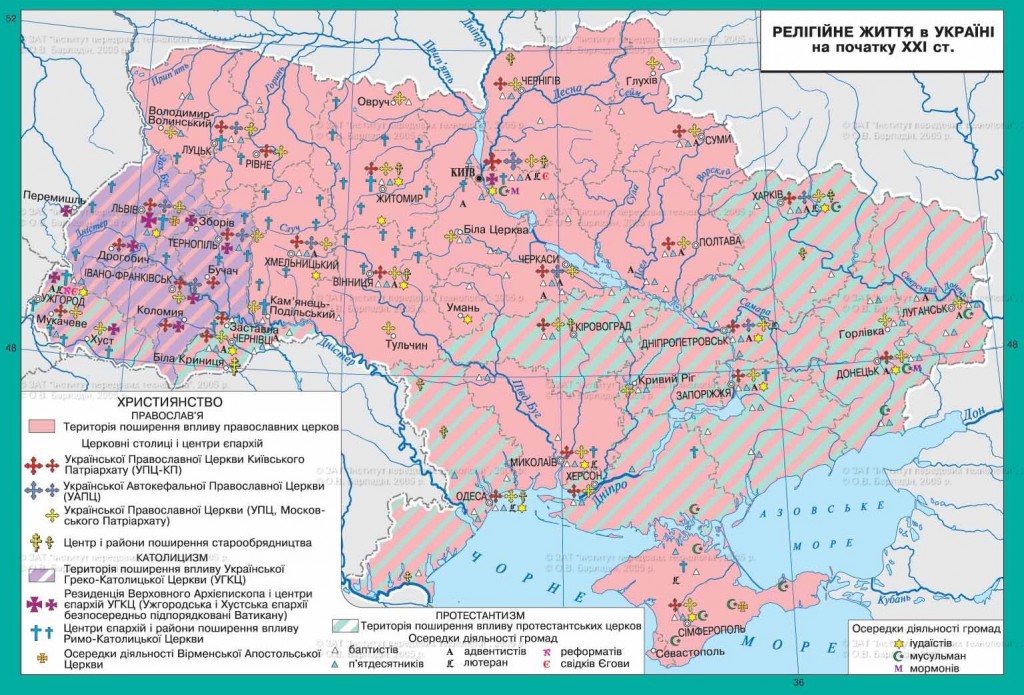
(Religious split. Simplified legend:
Pink – Orthodox church
Blue overstrikes – Catholic influence
Light-green overstrikes – Protestant infuence)

(Ukrainian producing economy. The legend is too big to translate, but one can see that most of the production is concentrated in the East)
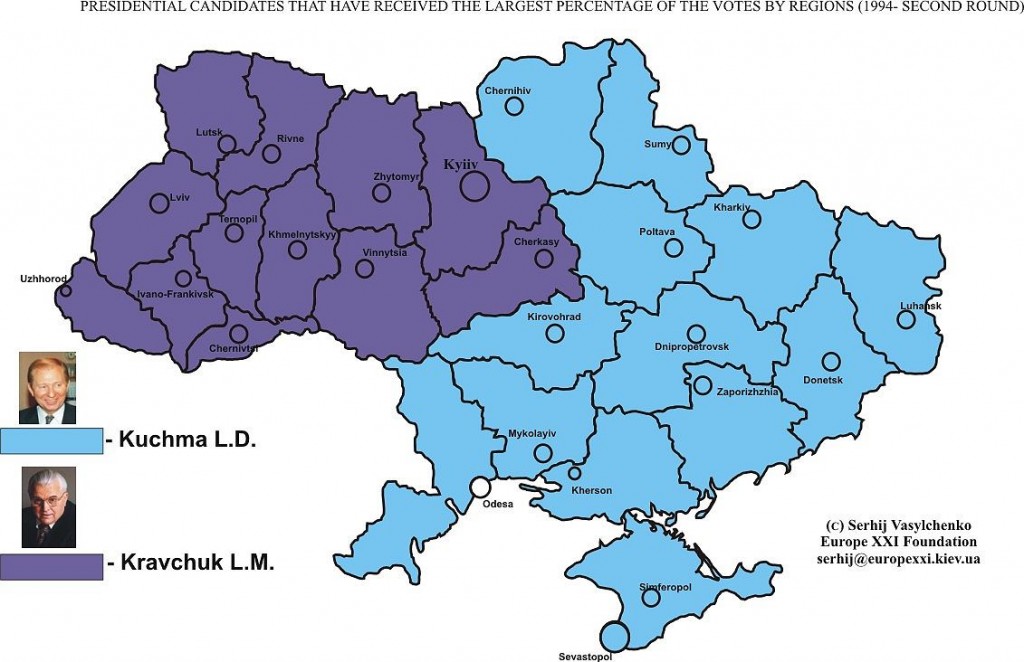
(The East voted for Kuchma, the West – for Kravchuk)
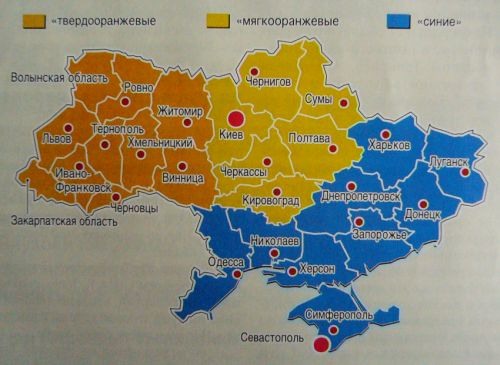
The “orange” split during the elections of 2004

The results of the second round of elections in 2004.

The results of the third round of elections in 2004, after the “orange revolution.

(The results of the election of 2006. Blue – Party of the Regions)

Parliamentary elections of 2007.
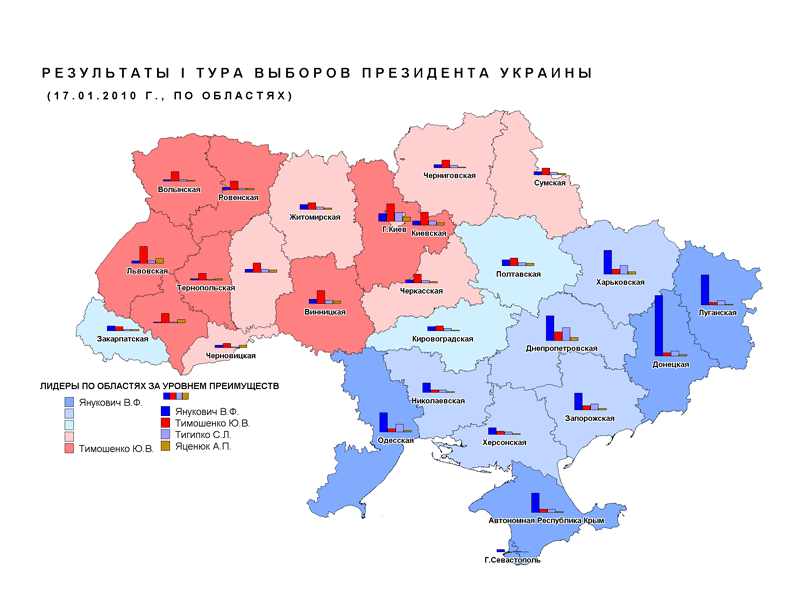
(The results of the first round of Presidential elections of 2010. Legend:
Dark blue – Yanukovich
Red – Timoshenko)
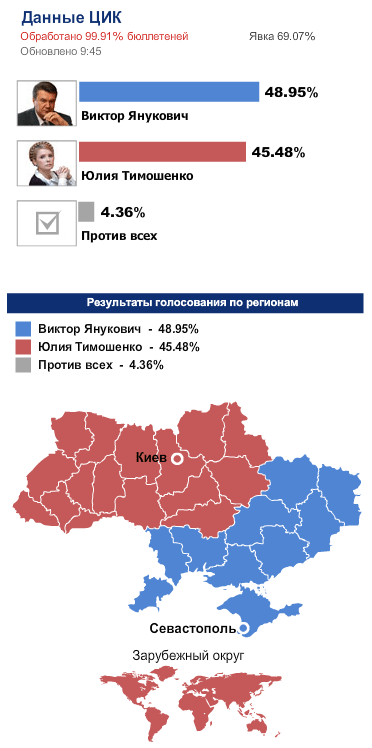
Voting results during 2010 elections.

(The leaders of the parliamentary elections of 2012. Legend:
Blue – Leading: Party of the Regions
Red – Leading: Batkivshina
Upper number – percentage who voted for the leading party)
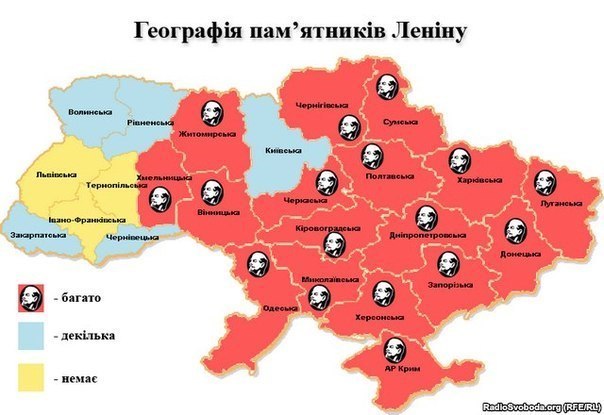
(A small curiosity the geography of statues of Lenin)
Adding to the blog translation, here some of the latest infographics:
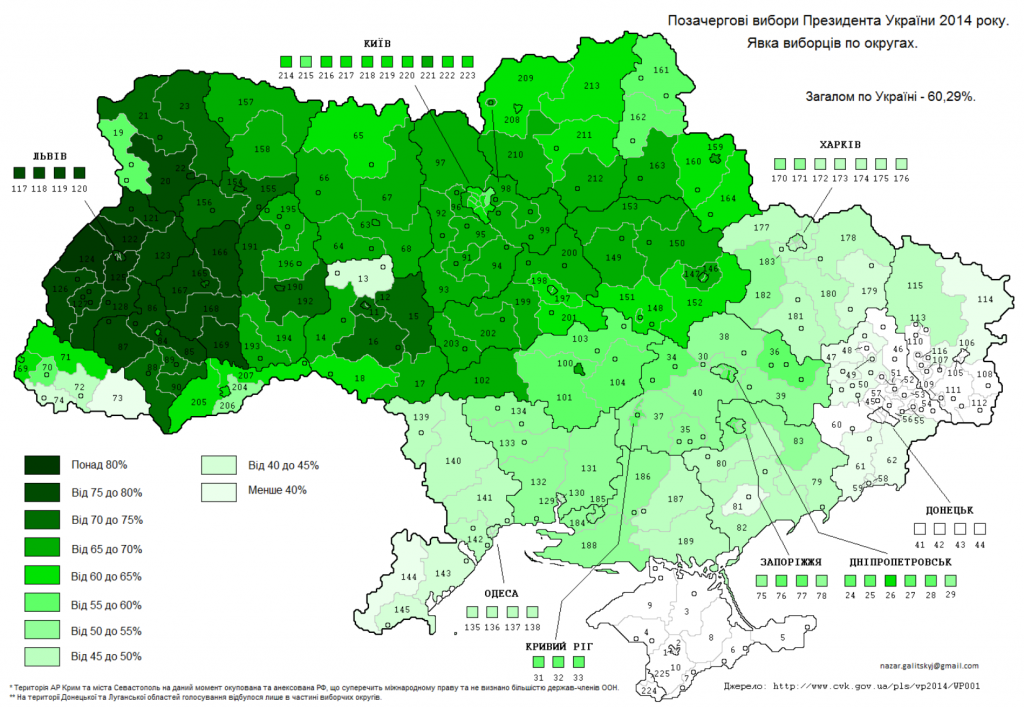
Attendance in % during the (p)residential (s)election of 2014.
Finally:
Total number of registered voters in the South East: 14,854,013
Total number of votes cast in the South East during the 2014 elections: 5,162,665
Turnout: 34.76%
Almost two-thirds of the voters boycotted the polls, and still the NATOis claiming that the elections were legit.
The last two images come from Gallup polls, outlined in this Russia Today article
Now, on with the blog translation:
And so on. Google for more if you like – there’s been produced lots of such maps over the last 10 years, covering various aspects.
It is not difficult to notice a fault line has long been established and all political upheavals have definitely weak influence on it. Neither
Yushchenko’s victory in 2004, nor Yanukovich’s victory in 2009 could change anything. And even if Ukraine joins the EU or the Customs Union, nothing is going to changes. This structural break in the case of Ukraine is unavoidable, and sooner or later will lead to its complete destruction, where the fault lines will serve as possible borders between two or more parts, defined by the economy, politics, culture and language. This is not some news and is regularly mulled over in Ukrainian political establishment, where, as a possible panacea such a scenario, which is constantly hanging over Ukraine, there are proposed various federation or even confederation schemes, in order to keep the current territories in some unified framework.
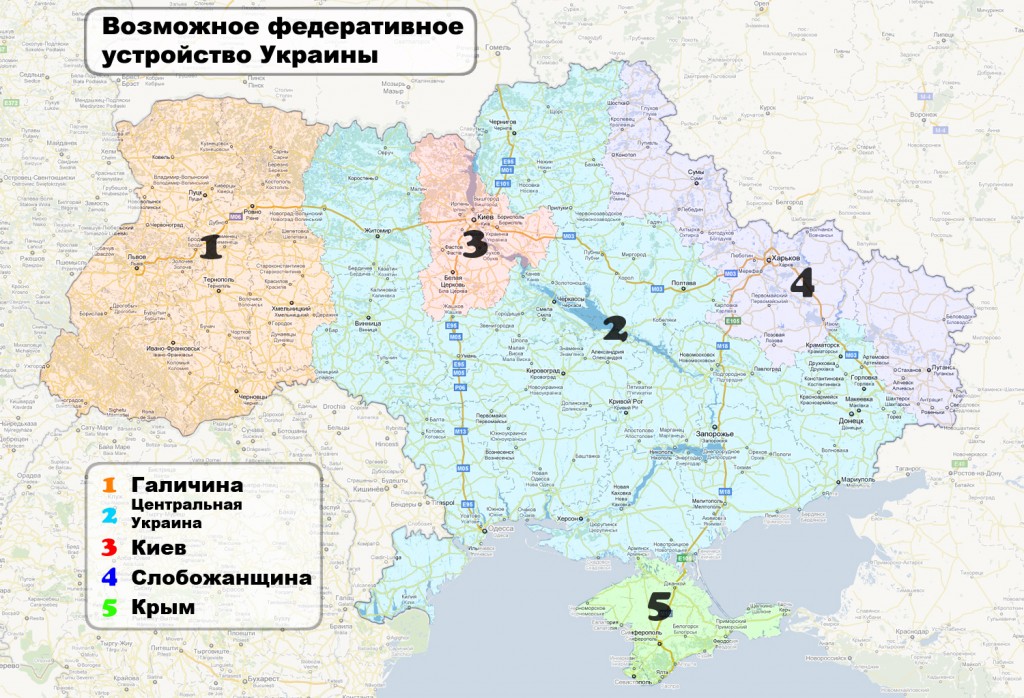
(Possible federative structure of Ukraine)
To me it seems that the design is unstable at the foundation and will inevitably fall with the destruction of the current world order, which provides a formal safety for the existing borders.
Altogether, all of this could seamlessly coexist within the Soviet model, where the issues of religious, ethnic and linguistic strife,
did not have much importance, and Ukraine was strictly economically integrated into a single economic organism of the USSR. In terms of language and
culture in Ukraine in Soviet times, both Russian as a state language and Ukrainian, as part of the local culture, coexisted organically. Citizens of the UkSSR were primarily Soviet citizens, and only then Russians, Ukrainians, Jews, Tatars, Greeks. When a single body of the Soviet Union was destroyed, all
that organically coexisted in the UkSSR, could no longer get along, and that leads to permanent conflicts through political, economics, religion, language. Capitalism cannot solve these problems within the framework of Ukraine, that’s why the conflict is permanent and unsolveable it in the current
Ukraine. I hope it will make more clear to fiend in Russia why what happens in Ukraine does so year after year.

(The population of Ukraine in millions of people. The population count fell by 6 million people.)
Population decreased from nearly 52 million to 45, even though in most complex demographic period during the 30s, which accounted for famine and repressions, Ukraine’s population continued to grow. While now, during 20 years of freedom and independence, without GULAGs and Stalin, the population is
reduced by more than 7 million people.
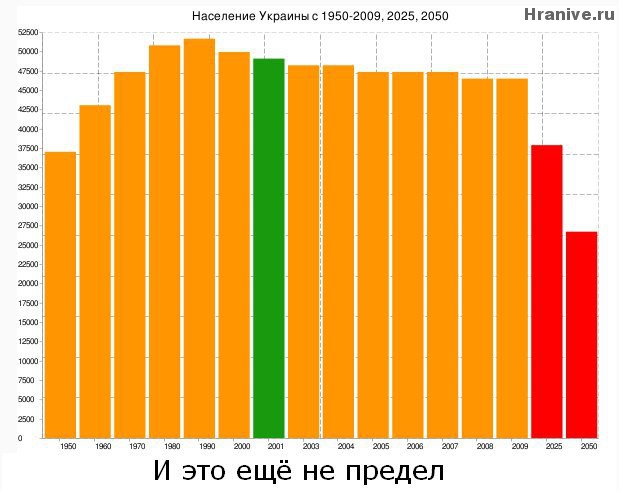
(Population forecast – And this is not the limit!)
According to forecasts, by 2050 it is reduced to 25-26 million and there are more even pessimistic forecasts on on the topic of total extinction of Ukrainians as a nation by the start of the XXII century.
A considerable part of the working population works abroad because in the country either does not have work to give or the pay is inadequate. Proceeds from migrant workers make up a significant portion of GDP Ukraine, which from the industrial republic turned into backward state, supplying the global market with cheap labour, besides the Ukrainian prostitutes that became canonical.
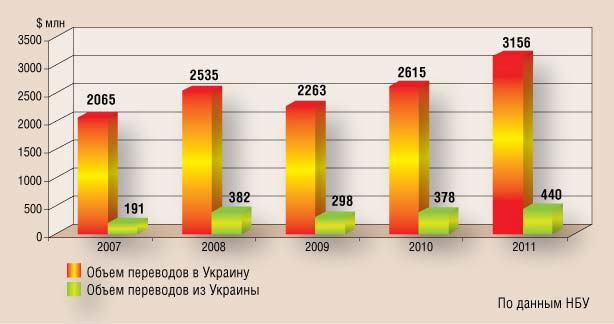
(Money transfers from abroad into Ukraine (red), vs transfers out of the country (green))
Over the last 20 years the country suffered economic losses comparable to the ones during the Nazi occupation (see http://hranive.ru/4762/).
(The diagrams below show by how many times production of various goods reduced in Ukraine:)
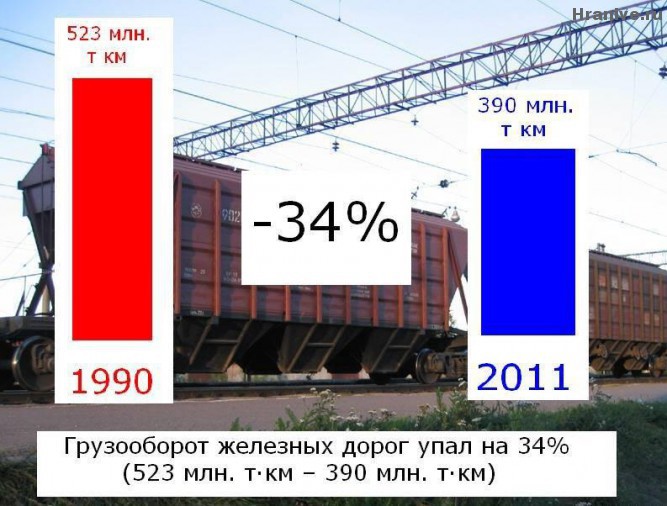
(Railway goods transportation)
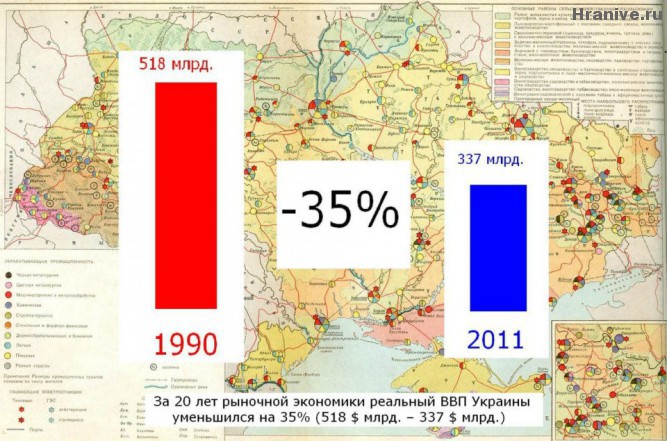
(GDP of Ukraine reduced from 518 billion dollars to 337 billion dollars)
In this regard, the term “Two of Ukraine” carries a certain dualism – internal structure split into two roughly equal parts, reflects the effects of the transition from a socialist UkSSR to a capitalist “independent Ukraine”. USSR was not an ideal state and there was a lot of internal problems, but against the backdrop of the abominations that are being done on its territories for the last 22 years, those problems seemed far-fetched and ridiculous against the background of ethnic hatred, blatant social inequality and poverty, cultural and moral degradation and extinction of the population and many others
things that accompany capitalism. And those who in 1991 voted for the “independence”, to some extent, are reaping the fruits of their choice.

(You all didn’t want to live in the Republics? Then live in colonies.)
It’s not fair to those who voted against it, and those, like I, who could not take part in this choice. But anyway, the choice was made and the results are before us.
At the end of 2013 we got a chronically sick country split into two parts and a whole bunch of degradation trends in virtually all areas of socio-economic, cultural and scientific development. Therefore Ukraine naturally called a Failed State or colloquially TSM – temporary state misunderstanding. Sad, but a regular fate for the once-mighty Soviet republic mired in capitalist swamp.

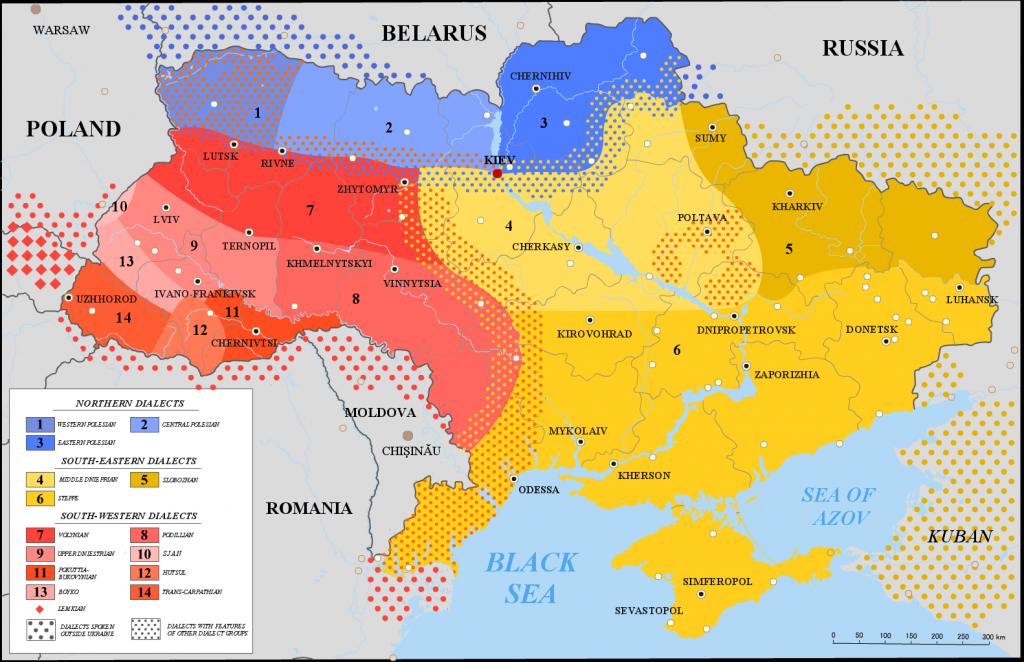



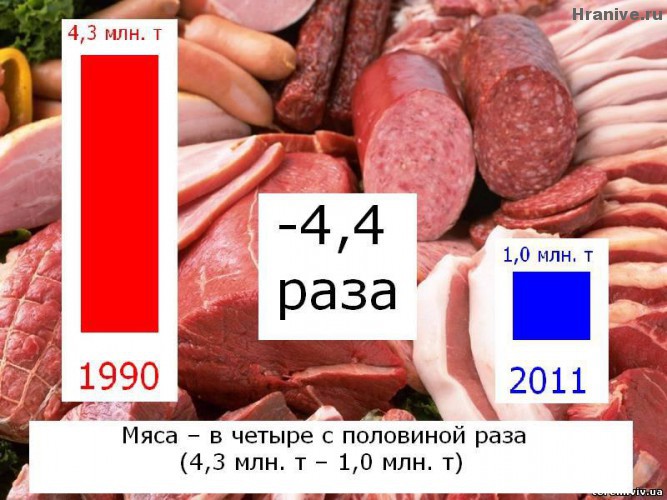
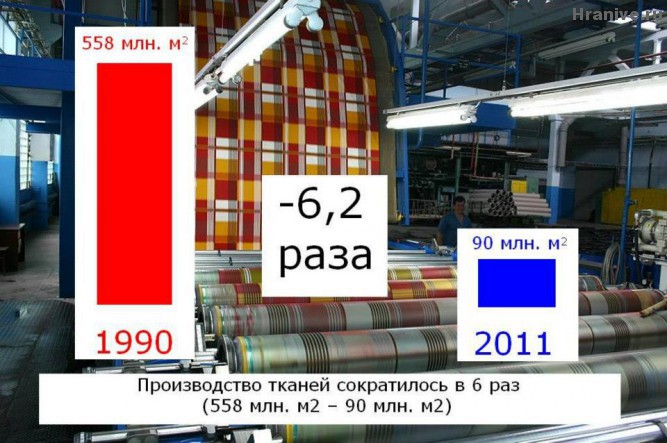
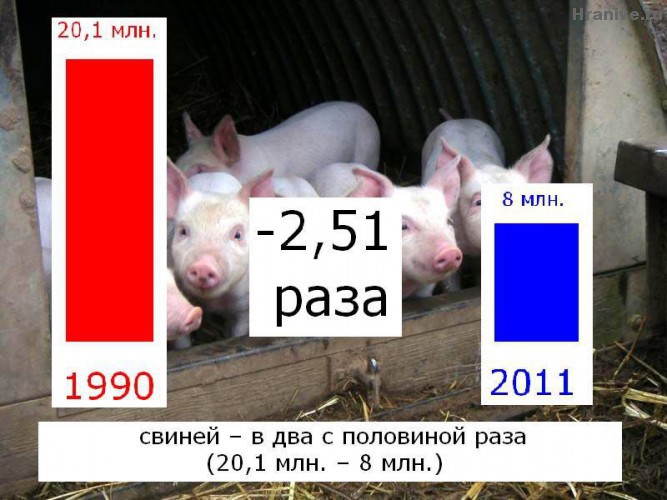
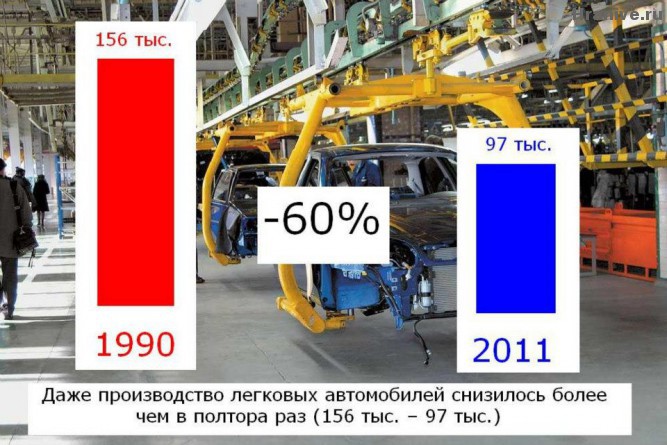
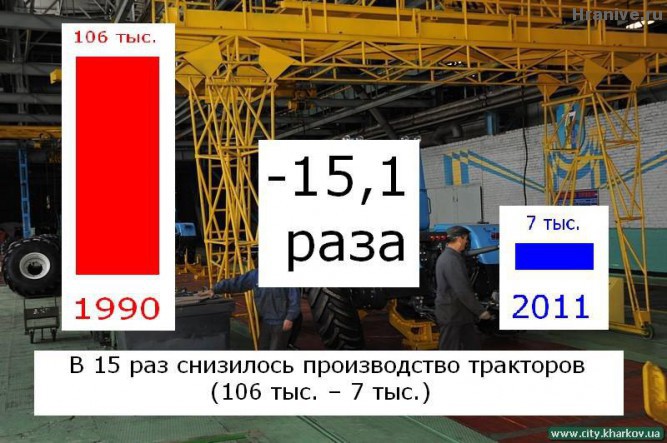
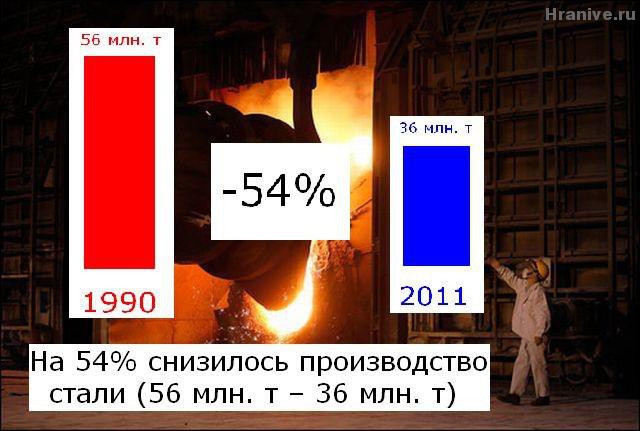


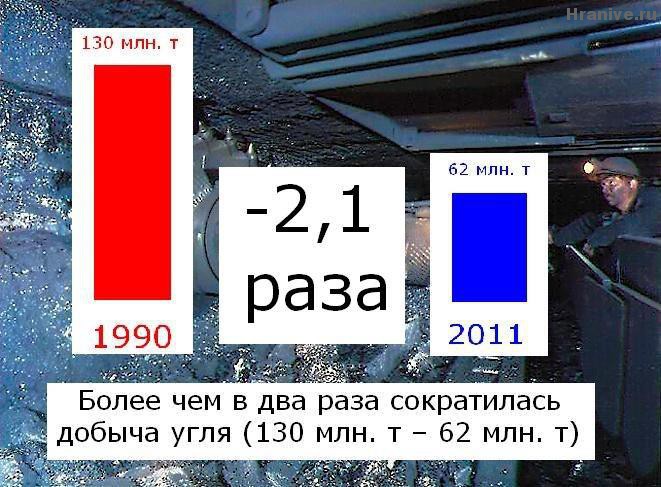
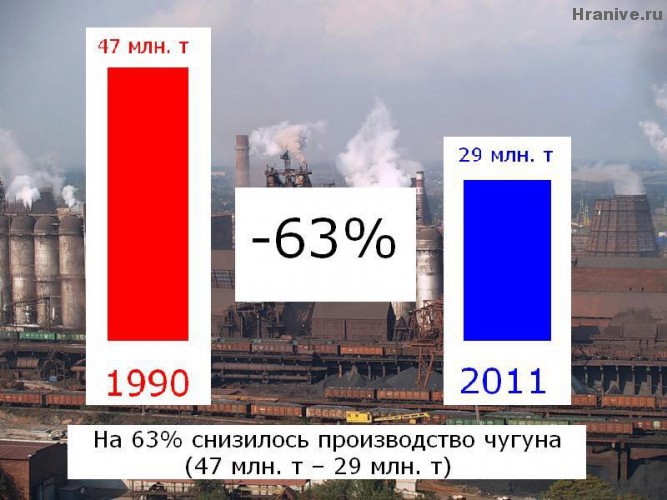
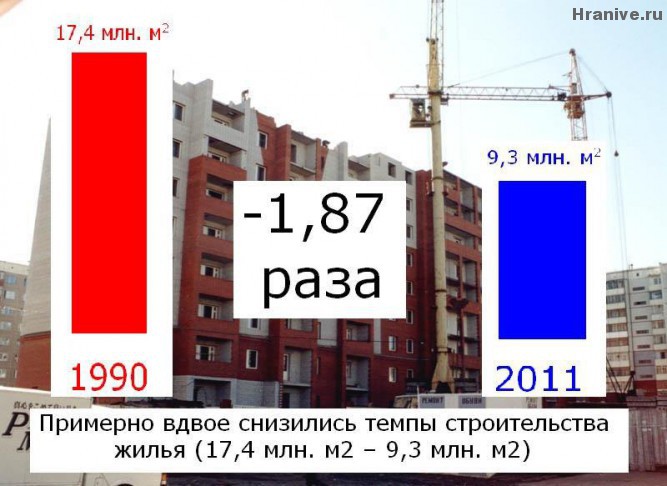


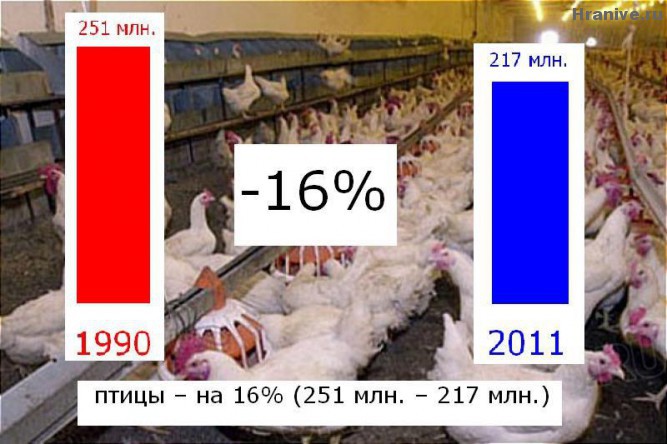
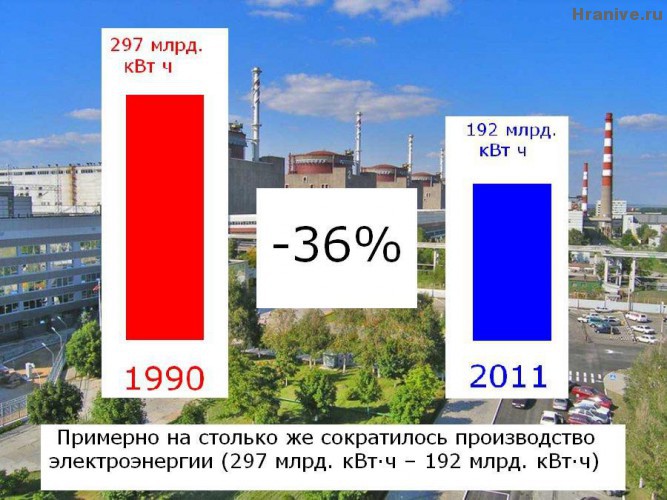

Pingback: And what about restoration of territorial integrity of Russia..? | Nemo's Realms
Pingback: Two Documentaries: “Murder of Yugoslavia” and “Democracy of Mass Destruction” | Nemo's Realms
Pingback: Ukraine: Still Smouldering Tinderbox (I) [Re-blog with comments] | Nemo's Realms
Pingback: How Malorossia Was Turned into the Patch-quilt of Discord that is “Ukraine” | Nemo's Realms